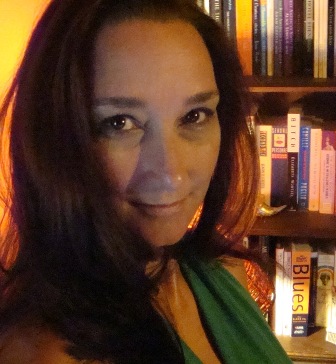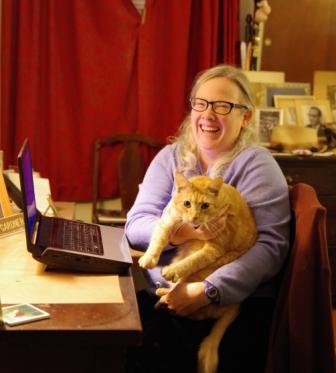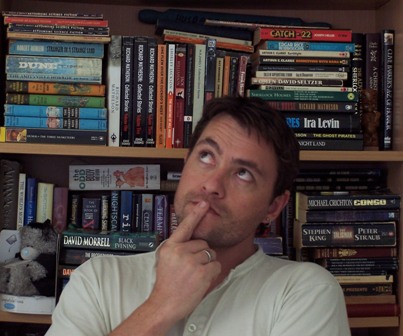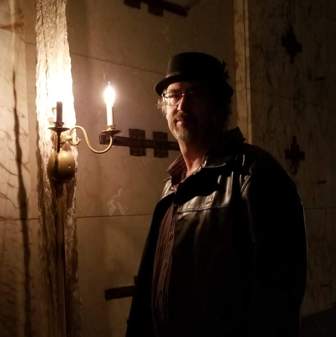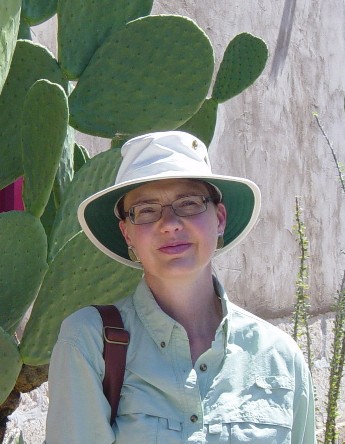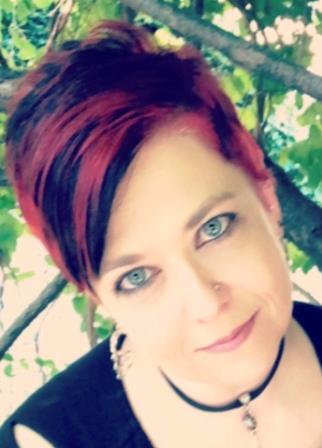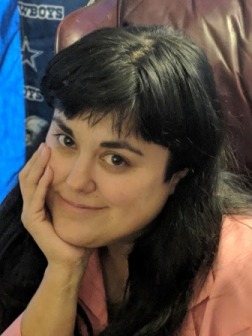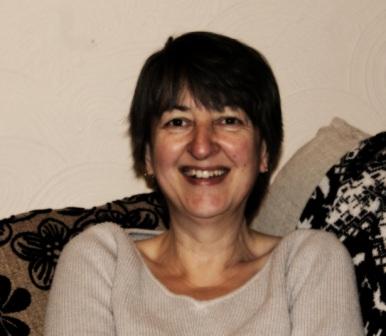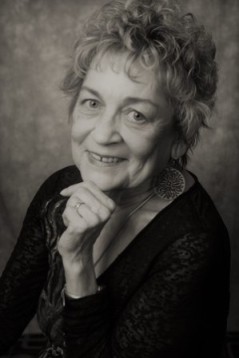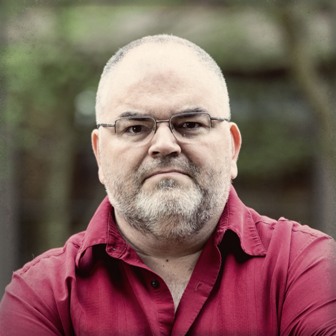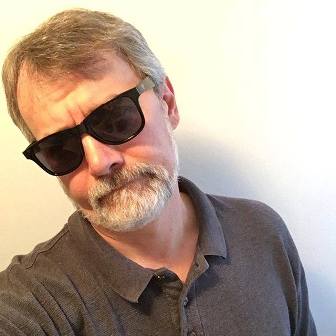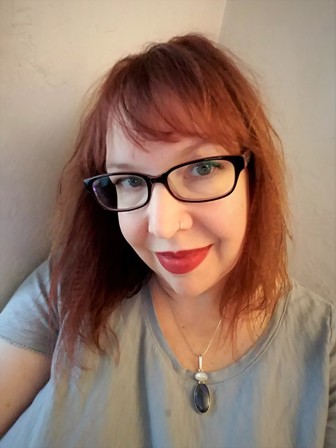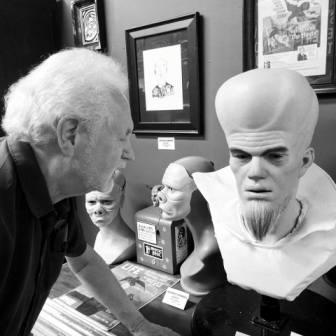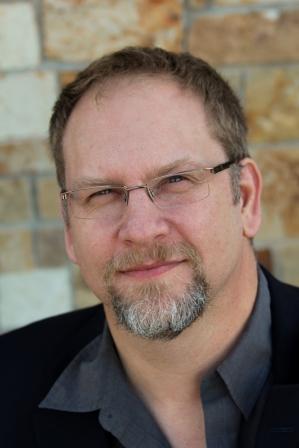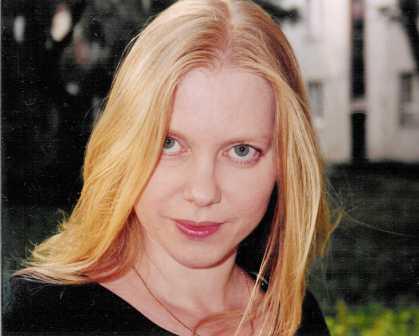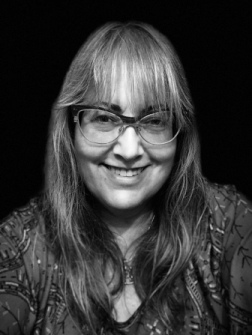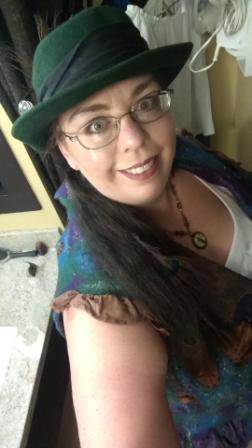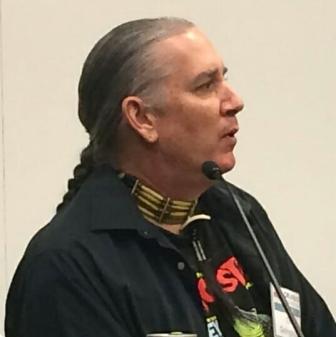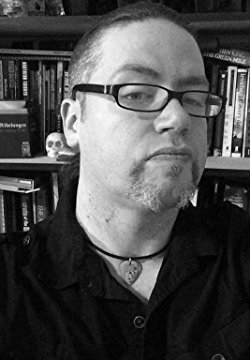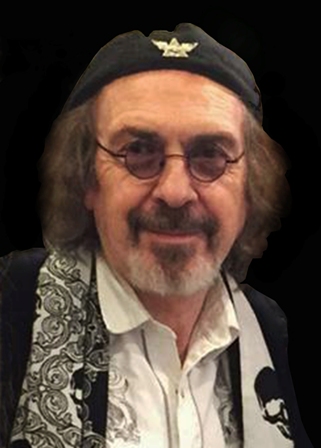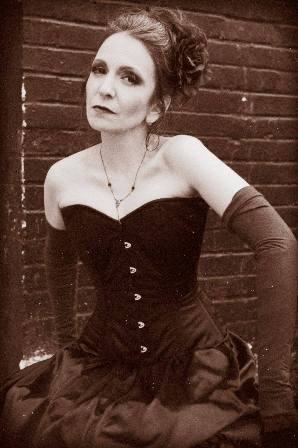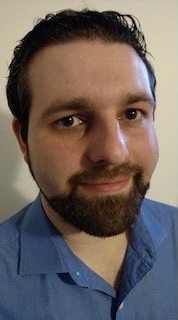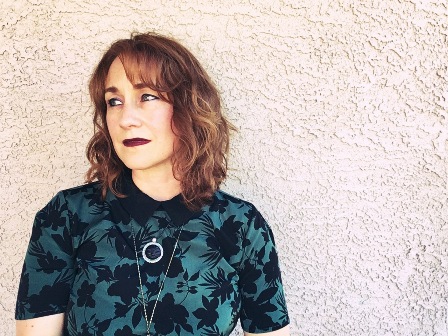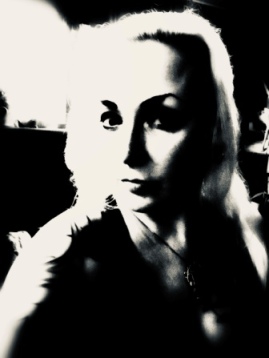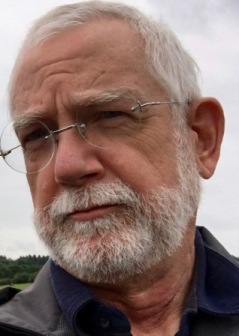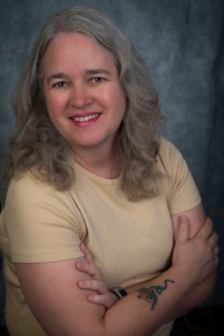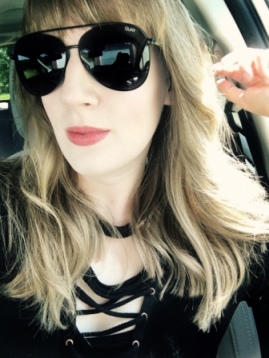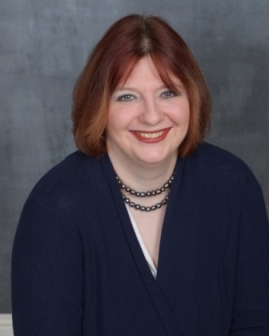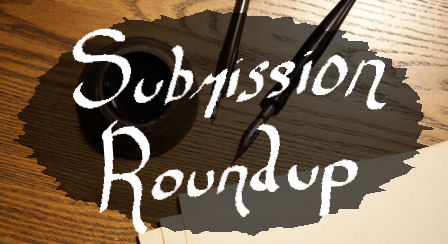Welcome back for the final installment of our HWA Poetry Showcase roundtable! This week, the featured poets share their future plans, specifically what they have in store for the horror genre!
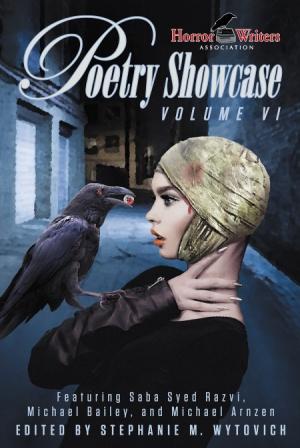
What projects are you currently working on? Do you plan to stay primarily in the horror genre in the immediate future, or are you looking to branch out or even combine genres?
CURTIS M. LAWSON: I’m working on a series of interconnected short stories about an aging rock star trying to find himself and his place in the world after the death of his wife. It draws from and mirrors a lot of Egyptian mythology, and has weird and supernatural elements, but I don’t think I’d call it horror. Maybe surrealist dark fantasy?
As for my commitment to horror, I think anything I do will have an element of that in it, but I’ve always blended genres in my work. All of my work is dark, but I draw from anything I enjoy and that feels right for the project be it horror, black comedy, grindhouse flicks, or superhero comics.
PETE MESLING: I think the horror genre works best at the shorter word counts accommodated by poetry and short fiction, to be honest. As a result, the two novels I’ve written so far, though not yet published, are both in genres other than horror. One is a middle-grade fantasy novel, and the other is a large-scale global thriller. I also have three planned short story collections (two horror, one crime), and of course there’s much more poetry and stand-alone short fiction in my future. I have a story in the forthcoming Dig Two Graves, Vol. 2 anthology from Death’s Head Press, and I have a few things out in the marketplace that I’m very excited about but can’t discuss quite yet. I’d love to publish a poetry collection one day, but again, horror would probably only be part of the mix.
CARINA BISSETT: Everything I write is tinged with horror and darkness even though my work tends to blend multiple genres. I’m a fabulist, and there is no stepping away from horror when working with myth, fairy tale, and folklore. It’s part of the landscape. I’m currently finishing up a very strange WWI novel about monstrous women. This fall, I have plans to finish my first poetry collection, which is also centered on fairy tales and myth. When I’m not writing, I teach generative writing workshops at The Storied Imaginarium including the popular Intersections: Science Fiction, Fairy Tales, and Myth. Even though a science topic is always part of the discussion with each fairy tale or myth used as a prompt in these modules, more than ninety percent of the stories that come out of that particular workshop contain horror in some shape or form. Following the successes of these writers only adds to joy of leading a literary life, and I look forward to seeing where we all end up next.
ROBERT PAYNE CABEEN: I just handed off the adapted screenplay for my novel, Cold Cuts, to a producer I’ve worked with several times in the past. Don’t worry, I’m not a novelist who wrote his first screenplay, I’m a screenwriter who wrote his first novel. Making that transition wasn’t easy. All the things you can never do in a screenplay, you must do in a novel. Now that I think about it, the focus and economy of words in poetry is closer to screenwriting than prose fiction. Also, the beats–you have to feel the beats in poetry and screenplays. That’s one thing I couldn’t give up when I wrote my novel. I had to feel the beats of the story, even if it meant missing out on luxurious details and fun tangents.
I’m a horror guy and I have no desire to work outside the genre. There are elements in Cold Cuts that would definitely be considered science fiction because I tend to avoid the supernatural in my horror. I rely on weird science to introduce uncanny elements. We all know horror when we see it, no matter which genre it may be hiding in.
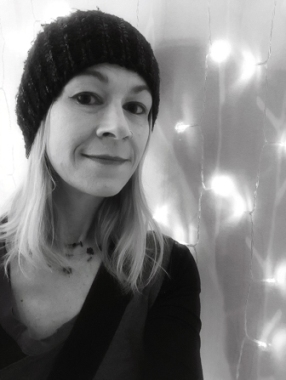 MONICA S. KUEBLER: I’m currently immersed in writing the final book in my YA vampire series/serial, the Blood Magic saga. As far as poetry goes, the majority of my poems are not horror poems. I was a poet long before I was a horror journalist or author, so I tend to use whatever genre a specific poem requires. That said, I also don’t expect to stop exploring dark territory anytime soon.
MONICA S. KUEBLER: I’m currently immersed in writing the final book in my YA vampire series/serial, the Blood Magic saga. As far as poetry goes, the majority of my poems are not horror poems. I was a poet long before I was a horror journalist or author, so I tend to use whatever genre a specific poem requires. That said, I also don’t expect to stop exploring dark territory anytime soon.
MICHAEL ARNZEN: Non-fiction is on my front burner right now, with academic writing for the Exploring Dark Short Fiction series for Dark Moon Books, as well as some film scholarship. Although I have been placing a lot of flash and poetry here and there, I’ve not been publishing a lot lately, partly because of life, and partly because I have several “big projects” I’m juggling — a very unique vampire novel, a pair of collections, a non-fiction book I re-booted from scratch on The Popular Uncanny — and all of it will likely gush out all over the place like multiple stab wounds in the near future. Interested folks should keep an eye on my website, gorelets.com for news.
ADELE GARDNER: I love the horror genre, as well as many others, and will continue to work in all of them. One of the current horror projects I have going is a young adult novel related to my story “Soul Cakes” in the Lost Souls anthology by Flame Tree Publishing.
RISSA MILLER: At the moment, I am working a collection of horror poems that explore the darker side of emotion seen through the lens of traditional nightmare monsters. The Temptress is a character in that chapbook. While I also write horror fiction, and have a few pieces in the works, my first novel is quite different, more like a romantic comedy, and will hopefully be out soon. Other projects include a serious stage play about the challenges women face in traditional corporate workplaces, and I’m also a history tour guide and wrote a new tour about the True History of Witches in Maryland.
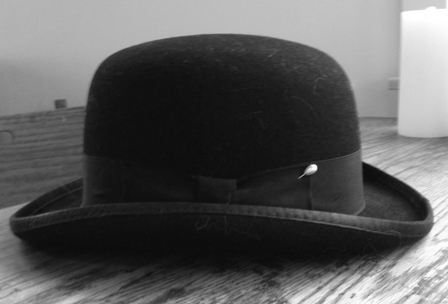 E.F. SCHRAEDER: I’m working on several pieces including a full length manuscript of poems and a longer fiction project. Most of my current projects have speculative elements, and I tend toward genre blurring (perhaps all label blurring, in general), with current fiction projects that include elements of mystery and horror, primarily.
E.F. SCHRAEDER: I’m working on several pieces including a full length manuscript of poems and a longer fiction project. Most of my current projects have speculative elements, and I tend toward genre blurring (perhaps all label blurring, in general), with current fiction projects that include elements of mystery and horror, primarily.
SUZANNE REYNOLDS-ALPERT: I started writing in the scifi/fantasy genres and have steadily moved toward horror. I plan to stay here for a while—I love how supportive the community is. I’m currently tweaking some prior work, trying to get it publishable. I’ve also recently discovered that I love to paint, and I’ve been focusing most of my creative energies there. I’ll be illustrating some of my poems this summer.
MARTY YOUNG: I’ve got a very dark horror novel I’m shipping around at the moment, plus another horror-sci-fi about to go out to my editor. Then there are the short stories I (try to) work on in-between. I find myself spreading my horror wings more and more lately, delving into horror-sci-fi and exploring the darkly fantastical. The two genres work perfectly together.
ROBERT CATINELLA: Currently I am working on a series of short stories that focus on the balance between the unknown and perception, especially in regards to the natural world. I am fascinated by how much is always going on and how the world does not owe anyone an explanation of its behavior.
I am going to remain in the weird horror genre for the time being, but I hope to branch out eventually into more psychological horror.
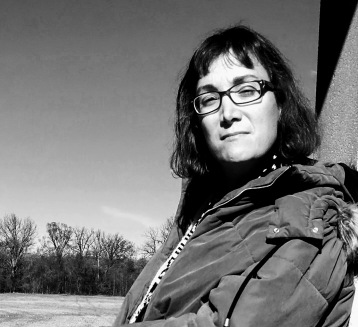 NICOLE CUSHING: As I type this in early July, I’m looking over the final edits for The Half-Freaks, my novella from Grimscribe Press due out later this year. I’m also spreading the word about my new novel, A Sick Gray Laugh, which Word Horde will release on August 27.
NICOLE CUSHING: As I type this in early July, I’m looking over the final edits for The Half-Freaks, my novella from Grimscribe Press due out later this year. I’m also spreading the word about my new novel, A Sick Gray Laugh, which Word Horde will release on August 27.
As for future directions; well, I don’t think I ever consciously chose horror. Instead, the events in my life (early encounters with death, trauma, etc.) have been such that horror chose me. I don’t think I can leave horror any more than I can leave my own skin. That having been said, I think my take on the genre has evolved. After reading several books of weird, dark literary fiction in translation (works by folks like Witold Gombrowicz, Ahmed Bouanani, and Dubravka Ugresic), I have a broader frame of reference. I have more ideas about how fiction can work.
G.O. CLARK: I just sold a SF related poetry collection, “Easy Travel To The Stars”, to Alban Lake Publishing, due out 2020. Always working on new poems, and the occasional short story. I’ve been working in horror and SF genres for many years, sometimes combining the two as in my poem “Again The Night Too Deep”, and will do so till the bitter end. Thanks!
DAVID SANDNER: I have a chapbook novelette, “Mingus Fingers,” coming out from Fairwood Press in November…it’s a kind of weird fantasy, not horror. I have been writing a lot of horror lately, though (I think it has to do with the current political situation, which is a horror show itself and calls out for our genre to deal with it). I am also a scholar, and just turned in a collection I edited, Philip K. Dick, Here and Now, to McFarland, and hope to see that sooner rather than later as well. I have finished a mystery I am trying to sell. Horror informs whatever I do and is central to the larger field of the fantastic in which I like to roam around…and poetry is something I can’t escape, even if I wanted to…so I will continue to produce works like my poem for the Showcase.
INGRID L. TAYLOR: I’m currently working on a dark poetry collection that centers on folkloric, fairy tale, and plant magic themes. I’m also writing a science fiction novel set in the near future Southwest United States. I am particularly drawn to ecohorror, which provides wonderfully creative options for exploring today’s pressing issues, such as speciesism, climate change, emerging technologies, and mass extinctions, so that will certainly be a future direction for me.
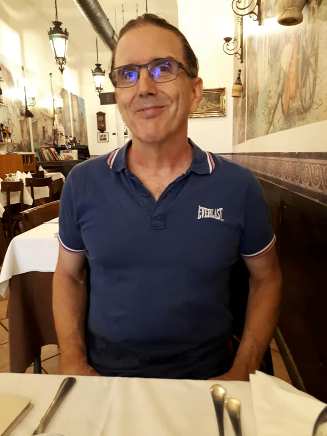 JOHN CLAUDE SMITH: I am presently working on a novel, one of a couple and a novella in progress. The novel on the front burner is a curious thing, not really horror, but should appeal to the horror fan; speculative, for sure, with a strong weird element and even a nod toward something within that I would call a kind of social consciousness, though throughout the first half, there’s no way you’d think that, haha… So, I guess my answer to the second part of the question is I enjoy playing in the horror sandbox, but sense a melding of genres will be more of a regular thing as I’ve already touched on some with recent work (“The Glove,” from my latest collection, Occasional Beasts: Tales, is a prime example of something that’s weird, perhaps horror, but also SF).
JOHN CLAUDE SMITH: I am presently working on a novel, one of a couple and a novella in progress. The novel on the front burner is a curious thing, not really horror, but should appeal to the horror fan; speculative, for sure, with a strong weird element and even a nod toward something within that I would call a kind of social consciousness, though throughout the first half, there’s no way you’d think that, haha… So, I guess my answer to the second part of the question is I enjoy playing in the horror sandbox, but sense a melding of genres will be more of a regular thing as I’ve already touched on some with recent work (“The Glove,” from my latest collection, Occasional Beasts: Tales, is a prime example of something that’s weird, perhaps horror, but also SF).
TRAVIS HEERMANN: I play in many different sandboxes. Horror is just one of them. I write YA fiction under the pseudonym T. James Logan, and I’m currently working to finish the second book my Lycanthrope Trilogy, which features a sixteen-year-old girl versus the werewolf apocalypse. I would call it more of thriller than horror, however, as it’s more about action and wild chase scenes than straight-up horror. Beyond that, I’m booked up for the next several months working on two different fantasy novel series, so that’s going to keep me busy for a while.
I’m also developing my Ronin Trilogy into a comic book series and trying to get some screenplays developed and into hands that might want to produce them. I’ve had the good fortune to be a finalist or winner at several horror film festivals over the last year or so, and I’m hoping to capitalize on that.
ANN K. SCHWADER: I’ve just signed a contract with Joe Morey’s Weird House for a new collection of horror and dark SF poems. Look for Unquiet Stars next year, I hope!
DONNA LYNCH: I’ve been working on what I hope will be my third novel if I can ever get my shit together, sort of a “but who’s the REAL monster” yarn.
I’ll certainly be working on another poetry collection, and I have a short story collection in the works that has a central character that appears throughout. My husband/ partner in our band Ego Likeness are working on a new album or EP, so I’ll be penning lyrics for that.
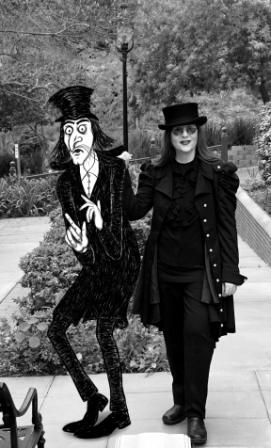 LORI R. LOPEZ: As well as being an author-slash-poet, I recently finished illustrating the Print Edition of my 2017 poetry collection Darkverse: The Shadow Hours. Not surprisingly, there are monsters. I’m working on art for a 2018 collection, Volume Three in my Poetic Reflections Book Series, along with preparing Second Editions of the first two volumes. New projects include a collection of ghost stories and a sequel to my rhyming tale The Dark Mister Snark titled The Darker Mister Snark. And yes, there will be a Darkest Mister Snark. I currently have two other books waiting for illustrations, my 2016 novella Leery Lane and my 2018 horror-fantasy The Witchhunt. I’ll be releasing those in Print later this year.
LORI R. LOPEZ: As well as being an author-slash-poet, I recently finished illustrating the Print Edition of my 2017 poetry collection Darkverse: The Shadow Hours. Not surprisingly, there are monsters. I’m working on art for a 2018 collection, Volume Three in my Poetic Reflections Book Series, along with preparing Second Editions of the first two volumes. New projects include a collection of ghost stories and a sequel to my rhyming tale The Dark Mister Snark titled The Darker Mister Snark. And yes, there will be a Darkest Mister Snark. I currently have two other books waiting for illustrations, my 2016 novella Leery Lane and my 2018 horror-fantasy The Witchhunt. I’ll be releasing those in Print later this year.
I will definitely continue writing and drawing Horror!! I’ve been combining genres for years, from Speculative to Horror mixed with Humor and Fantasy, Fantasy-Adventure and so on. I write for both kids and adults.
ANNA TABORSKA: I just had a cat-themed horror story micro-collection called SHADOWCATS come out with Black Shuck Books, and the first piece in that was actually a poem. I have a collection of horror short stories called BLOODY BRITAIN coming out soon with Shadow Publishing, and I recently started work on my first novel, TALES FROM THE ORGAN GRINDER. I definitely plan to stay within the horror genre.
Thank you very much for giving me the opportunity to share my thoughts on horror poetry with you.
EV KNIGHT: My debut novel The Fourth Whore is scheduled for release in 2020 by Raw Dog Screaming Press. On July 1st, the first episode of a podcast I cohost with my husband aired. The podcast is called Brain Squalls and in it we brain storm stories based on prompts and talk about story creation. In the podcast we try to cover all genres. As I writer though, I tend to stay with horror as a genre. I am currently writing my second novel, about an ambiguously haunted house tentatively titled The Last Sacrifice.
DAVID POWELL: I’ve written horror, noir crime, dark paranormal, surrealist, and science fiction. I love crossing genre lines, though learning how to describe my work for editors is a challenge. It’s worth it, though. For me, writing that’s hard to classify sticks with you the longest. I’m currently working on a novel based on something that happened in a school where I used to work–the only outbreak of genuine mass hysteria I’ve ever seen up close.
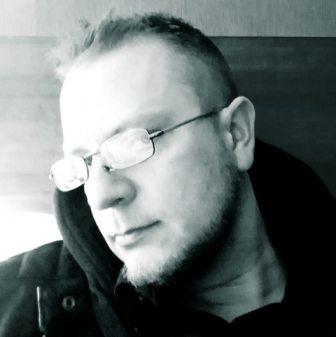 MICHAEL BAILEY: I recently finished a memoir about forever-burning California called Seven Minutes, which I wrote in a span of twenty-three days—the lifespan of the fires. It’s nonfiction, but the most horrific story I’ve ever written. Josh Malerman recently stated “You’re gonna cry” in part of his blurb for the book, and he’s right. The emotions too difficult to convey with narrative are expressed poetically throughout the book. This thing is a rollercoaster of emotion, and unbelievably honest. Prior to that, I finished a psychological thriller called Psychotropic Dragon, and The Impossible Weight of Life, a fiction collection featuring mostly autobiographical work. And while those three books are seeking homes with publishers, I am finishing Seen in Distant Stars, which I guess could be called a dark and dystopian science-fiction thriller, and then the plan is to write Hangtown, a historic western-kinda-thing set in my hometown. All these books have elements of horror. I have never considered myself a “horror” writer; I simply write what I need to write (some call it literary), and sometime later it’s given a label.
MICHAEL BAILEY: I recently finished a memoir about forever-burning California called Seven Minutes, which I wrote in a span of twenty-three days—the lifespan of the fires. It’s nonfiction, but the most horrific story I’ve ever written. Josh Malerman recently stated “You’re gonna cry” in part of his blurb for the book, and he’s right. The emotions too difficult to convey with narrative are expressed poetically throughout the book. This thing is a rollercoaster of emotion, and unbelievably honest. Prior to that, I finished a psychological thriller called Psychotropic Dragon, and The Impossible Weight of Life, a fiction collection featuring mostly autobiographical work. And while those three books are seeking homes with publishers, I am finishing Seen in Distant Stars, which I guess could be called a dark and dystopian science-fiction thriller, and then the plan is to write Hangtown, a historic western-kinda-thing set in my hometown. All these books have elements of horror. I have never considered myself a “horror” writer; I simply write what I need to write (some call it literary), and sometime later it’s given a label.
GERRI LEEN: I have a longer, middle grade speculative project I’m working on right now and a contemporary fantasy novel to finish redrafting. For shorts, I go back and forth between sci fi/fantasy and dark fantasy/horror, with little dips into mainstream fic and even romance under the pen name Kim Strattford. And of course, I’ll be working on poetry. Always poetry.
NACHING T. KASSA: At this time, I’m writing a short story about Sherlock Holmes and an Occult Detective of my creation. Everything I write has that special touch of darkness. I may combine genres such as mystery and romance, but I don’t see myself leaving the horror genre anytime soon.
LISA MORTON: I’m always exploring new paths, and have recently published stories in the mystery and young adult fields. However, most of this year will belong to a new non-fiction book: I’m currently working on Calling the Spirits: A History of Seances for Reaktion Books. I’m also having too much fun providing the weekly “Ghost Reports” on a delightful podcast called Ghost Magnet with Bridget Marquardt.
 LEE MURRAY: Don’t tell anyone, but I’m not really a horror poet, or even a poet—I have more published novels than poems—but, somehow, I have managed to slip into the room. I rather like the company.
LEE MURRAY: Don’t tell anyone, but I’m not really a horror poet, or even a poet—I have more published novels than poems—but, somehow, I have managed to slip into the room. I rather like the company.
TRISHA J. WOOLRIDGE: I write all over the place! Because of all my recent medical issues and being so mentally, emotionally, and physically exhausted from them, a lot of my more recent work has been some of my darkest horror. But…I’m also working on a really lighthearted paranormal adventure romance thing that…don’t laugh too hard…is inspired by the current reboot of DuckTales. I also have an epic fantasy series that I’m working on… and two separate epic fantasy stand-alone novellas or novels that came from short story attempts. I also have some dark SF… oh, and I write a lot of children’s work, too. I had three middle grade novels, two dark fantasy and one SF adventure, that are currently out of print, I have another on submission, and I’ll be in next year’s New Scary Stories to Tell in the Dark. On the poetry end, I’m working on a collection based on having ADHD and some ekphrastic poems—poems inspired by photos I’ve taken. (I may have a special thing with those for October’s Merrimack Valley Halloween Book Fest!)
STEPHANIE ELLIS: I’m currently working on a folk horror novel on and off whilst I try and home two other novels (one folk horror, the other industrial horror). I have just started writing a new poetry collection, tentatively called Dietary Requirements and am planning a collection of mixed poetry and flash fiction with friend and fellow horror writer Alyson Faye. I am also part of an online writing group which keeps me developing my craft in short stories.
I think I will probably remain primarily in the horror genre, or more accurately, dark fiction. I do have an idea for a book whose overall premise is very dark but which might fall into the thriller category. I have a weakness for Scandi noir and would like, one day, to write something which falls more in that field. I can guarantee though, I will never write a Mills and Boon!
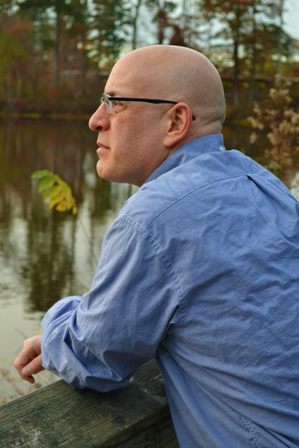 PETER ADAM SALOMON: My new poetry collection, PseudoPsalms: Revelation should be out soon, and my next novel, MORSUS, should follow later this year. PseudoPsalms: Onan is scheduled for some time in 2019 and it is a completely new experiment for me, not so much horror as psychological and questioning, in all the best ways.
PETER ADAM SALOMON: My new poetry collection, PseudoPsalms: Revelation should be out soon, and my next novel, MORSUS, should follow later this year. PseudoPsalms: Onan is scheduled for some time in 2019 and it is a completely new experiment for me, not so much horror as psychological and questioning, in all the best ways.
My latest novel, EIGHT MINUTES, THIRTY-TWO SECONDS, is a Young Adult Science-Fiction/Thriller which touches on horror and is, perhaps, the scariest thing I’ve ever written.
SARA TANTLINGER: I am currently working on a historical horror novel, but I have a vague idea of what I’d like to do for my next poetry collection, too! I think no matter what I write, horror will always be the dominant genre or element, but I’m a big fan of hybrid and cross-genres.
OWL GOINGBACK: I’m currently working on a few short stories for horror anthologies, along with a follow-up to my recently published horror novel Coyote Rage. I also have a few scripts in the works, including a couple for comics. Having won the Bram Stoker Award, I’m best known for horror novels and stories. But I’ve also written fantasy, science fiction, children’s books, comics, self-defense articles, even ghostwritten for Hollywood celebrities, so you never know where I might turn up in the future.
LISA LEPOVETSKY: As for the future, after my first book of dark poetry, VOICES FROM EMPTY ROOMS, I have two volumes of poetry in the works: one is another book of dark poetry generated from my fear of circuses and carnivals, and the other is a more literary series of persona poems based on the life of an ancestor of mine. Thanks for this opportunity to share my love of poetry and the dark side.
MARGE SIMON: Mary A. Turzillo and I are putting together a poetry/prose collection, VICTIMS. I’ve been combining genres since I started writing. It’s what I do!
Thanks for creating this forum for the Showcase poets!
DEBORAH L. DAVITT: Honestly, I’m rarely not working on things! I freely move between and bend genres. I have a poetry collection forthcoming from Finishing Line Press later this year called The Gates of Never (here, have a link! https://www.
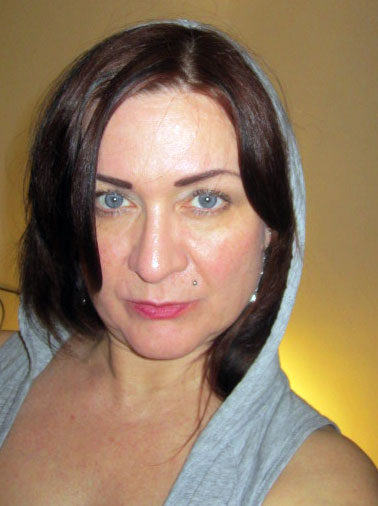 COLLEEN ANDERSON: I often write dark but once in a while something brighter is born. And I write some mainstream poetry as well. I’ve been exploring a lot of forms lately and I want to keep doing that. I’m also working on two poetry collections, mostly of poems published over a host of years. But I’m thinking of doing another new collection. It’s just I keep sending it out there to the world and they’re published before I get anything together. But it’s time to get a book out. Overall I’ll just write what ever pops into my mind, but when it does it’s usually dragging something strange and disturbing behind it.
COLLEEN ANDERSON: I often write dark but once in a while something brighter is born. And I write some mainstream poetry as well. I’ve been exploring a lot of forms lately and I want to keep doing that. I’m also working on two poetry collections, mostly of poems published over a host of years. But I’m thinking of doing another new collection. It’s just I keep sending it out there to the world and they’re published before I get anything together. But it’s time to get a book out. Overall I’ll just write what ever pops into my mind, but when it does it’s usually dragging something strange and disturbing behind it.
And that’s Part Four of our roundtable! Thank you so much to our featured poets for being part of this month’s author series! Please be sure to check out the HWA Horror Poetry Showcase, Volume 6! It’s a fabulous anthology and one that will feel quite at home on your horror-loving bookshelf!
Happy reading!

